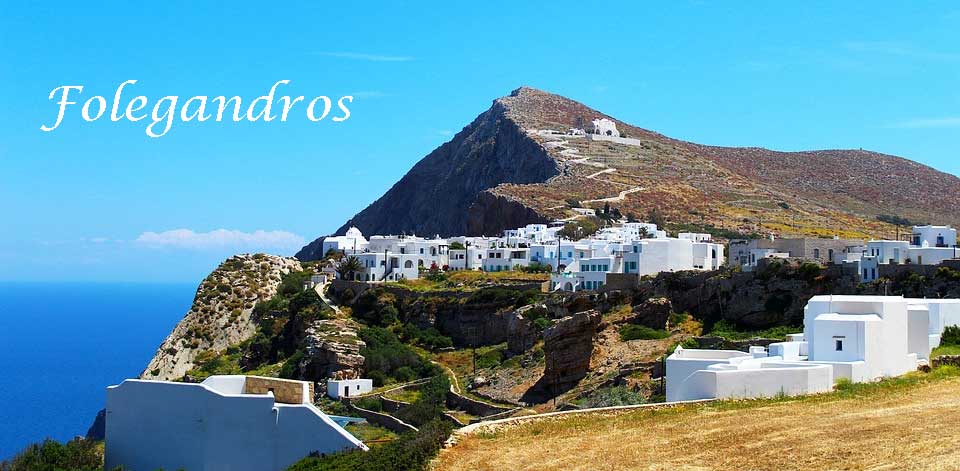General information about the island of Folegandros
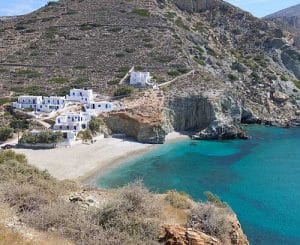
You can reach the island by ferry from Piraeus (nine hours) or from one of the neighbouring islands. There are regular ferry connections with Santorini, Ios, Paros, Naxos and Sikinos and less frequent services to Syros, Milos, Sifnos, Serifos, Kimolos and Anafi. The easiest way to reach the island is by ferry from Santorini (two and a half hours) which has regular Olympic Airways flights to Athens.
There are no banks and hole-in-the-wall cash machines here, no car hire firms or all-night discos throbbing with teens and twenty-somethings. But there are just enough tourists attracted to the place to warrant a good selection of tavernas and lively bars where you can mingle with the islanders until the small hours.
Not that you come to Folegandros for its nightlife. This is an island for those who appreciate nature, tranquility, unspoilt beaches and a way of life which seems hardly to have changed for centuries.
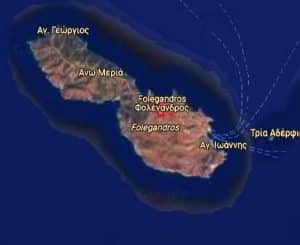
The island has been inhabited for more than 3,000 years. The first settlers are thought to have been Cretans from the early Minoan civilisation; the Dorians (a Greek tribe from the north) settled here in the 8th century BC, the Romans later used the island as a place of exile and it was subsequently invaded by the Venetians and later the Turks. But an invasion of mass tourism has so far been held at bay and herein lies the island’s charm.
Roam the rugged island trails in spring and early summer when the hills and fields are carpeted with wild flowers and the air is scented with thyme, oregano and caper flowers. Visit in late autumn after the last of the summer visitors has left and you’ll be able to join the islanders for the annual olive harvest.
But make sure you book in advance if you’re visiting towards the end of July or at any time in August because the island’s limited supply of accommodation gets booked solid.
Discerning tourists snap up the best places to be found in the lovely capital of Hora which must rate as one of the most enchanting towns in the whole of the Greek islands. The medieval part of the town, perched high on a cliff top, is a delightful concoction of arched alleyways filled with sugar-cube houses bedecked with bougainvillea, geraniums and hibiscus.
History
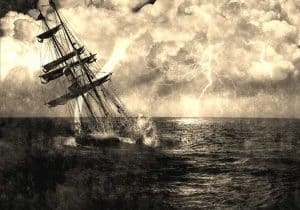
Then, according to mythology, the Minoan Cretans came to the island, led by the son of the king of Crete, Minos Folegandros, after whom the island took its name in later times. It is known from historical texts that the island was a refuge for those persecuted from Crete. Scholars also propose the version that Folegandros owes its name to the Phoenicians. Read more about the History of Folegandros
Flora and fauna
Most of the island is a protected Natura 2000 habitat. It is a rocky habitat with bushy vegetation and caves where Mediterranean monk seals find refuge. The protected species of flora include: Holzmann’s sylene, Cycladic symbiont, Aegean anthyllis, endemic bellflowers, crocuses, wild carnations, Amorgina urchins, Earhart’s wicks, Amorgus gallium, oriental helichrysum, Pretenderis pipineles, honeysuckle sessile, Cythnia the silent, Senecia the two-colored, etc. The protected species of the fauna include: lafiates, kurtodactyls, eryx, samiamidia, silibutia, vipers and pinna or noble. The protected avifauna includes: black petrels, Mediterranean mergansers, ospreys, peregrine falcons, grebes, grebes, grebes, grebes, grebes, goshawks, storks, white swallows, white herons, terns, barn swallows, egrets, terns, terns, black-throated warblers
Tourism
Folegandros is the island of moderation. The mild tourist development of the last two decades has allowed the island to preserve its character and physiognomy intact. At the same time, however, modern infrastructures and organized tourist services were developed. Folegandrites continue to take care of their place and enjoy life in their own way which they share with more and more friends of the island.
Still unexplored by many, it preserves with its mild tourist development the greatness of its natural wealth and the human dimension in its lively and restless, small societies.
The rocks and the beaches, the attractions and the events, the residents and the visitors make up a unique place, which invites you to try new tastes, different walks, to get lost, to forget, to feel.
The hotel infrastructure has developed a lot in recent years, but without affecting the traditional colour of the island. There are accommodations for all tastes and preferences, in Chora, Karavostasis, Agali and Ano Meria. Folegandros is a unique example of an island in the Cyclades with squares in the shape of the Chora.
Local cuisine

In Folegandros, there is also a local cheese factory with various cheeses such as souroto (fresh goat’s cheese), sour cheese, anthotiro and “sketo” cheese, a hard cheese that ideally accompanies matcha. The octopus carpaccio it’s the most gourmet seafood meze you can taste on the island, specifically at Blue Cuisine, which has won the hearts of the locals and visitors of Folegandros.
In Karavostasi and Agali you will eat fresh fish and seafood delicacies and in Chora you will find everything from international cuisine to taverns that serve kalasounes (cheese pies with “grated” cheese), stewed capers, baked chickpeas, caravolou (snail stew), karbouzenia (pie with watermelon, honey and sesame), traditional pastries and several other local products.
In Pouna, in the homonymous square, try the excellent breakfast in the Piso Avli. At the Papalagi tavern in Agios Nikolaos, we try super seafood with a sea view. At Spitiko in the heart of Chora and at the Meeting in Ano Meria try the best matcha and local flavors in huge portions
What to do in Folegandros
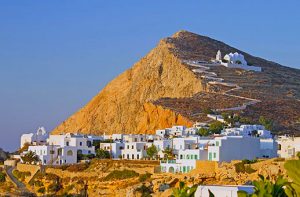
A charm that has nothing to envy from its prosperous Cycladic neighbor, Santorini and its caldera. If wherever you go you also want to see a museum to get to know the place better, then keep reading.
The Folklore Museum located in Ano Meria is the place you want to visit in this case. The museum is housed in one of the traditional haystacks of the 19th century and being a typical type of farmhouse, which is a well-organized and self-contained agricultural and livestock unit, you can see how the unit worked, but also many other elements that made up daily life of the locals until the middle of the 20th century. If you don’t see it as a museum, you can also see it as a “time machine”, since it will definitely take you on a journey
Of course, after a swim in the sea there are always afternoon and evening walks on the island and the famous Castle is the ideal place for this purpose.
The medieval settlement of Kastro is located in Chora tis Folegandros having preserved its traditional character flawlessly, since there you will find low whitewashed houses and arcades built on the edge of the cliff, 200 meters above the sea.
From the edge of Chora, in the square of Pounta, begins a winding staircase, an uphill cobbled path that leads to the largest church of Folegandros, the all-white Dormition of the Virgin, built on the rock. Prefer to go up at dusk, on the one hand so that the hot Cycladic sun has fallen and on the other hand to enjoy the sensational sunset.
Where to stay
There are many hotels, apartments and rooms that offer comfortable accommodation in Folegandros, as well as facilities such as swimming pool, gardens, bar, restaurant and many others that will complement your vacation in the best way.
The months of July and August are the months with the highest demand, so if you are planning your vacation during this period, it is advisable to make your reservations well in advance.
Rooms at Paraporti in Chora cost from €110 for a double. while the enchanting rooms of Pegados Villas near Chora you will find from €162 with breakfast. Just outside Chora, the modest double rooms of Pavlos x2 are among the most low budget options, since they start from €65 in the high season, but you have to hurry to get them.
Nightlife
Folegandros has a nightlife that follows the slow flow of the day. There are no discos in Folegandros, only bars that look like small outdoor lounges along the alleys and in the squares.
You can dine in one of the taverns of Fry, where food is served in abundant portions, at very reasonable prices, then you can wander around the squares of the Chora, having a drink or enjoy the night at in one of the two small music bars, the Aquarius and the Ba-Raki.
Dunabi and Kontarini squares are among the busiest and liveliest. Here, as well as in the alleys between them, every night the cobblestones are flooded with the island’s visitors, who fill not only the cafes and bars, but also the terraces of the squares – Here you don’t even need to sit in a shop to have fun, the whole center of the country becomes a big group.
Villages
The villages in Folegandros are few. The island has two large villages (settlements). The capital is Chora (or the city of Folegandros), built on the eastern side, on an elevation of 200 m. The other settlement, Ano Meria, is located further north, and is the most traditional part of the island. It is the rural settlement with the houses located at a distance from each other and creating the so-called “Themonies”. Smaller settlements are Petousis, Livadi, Agali and the port which is Karavostasis, at the south-eastern end of the island.
Chora of Folegandros
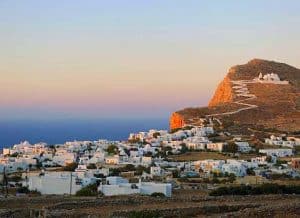
The walk through the narrow streets of Chora is free, since the passage of wheeled vehicles is not allowed. Parking is available in spacious parking lots outside the settlement.
The view of the northern, precipitous side of the Castle in the square of Pounta, the midday break in the shade of the square of Dunavides and the evening vibrancy of the square of Piatsa make up the image that the visitor forms in his first contact with Chora.
Ano Meria
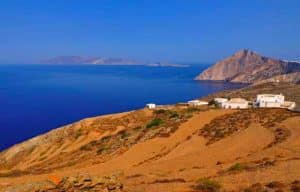
Here the life model is rural and little has changed in decades.
Most of the dwellings are not simple houses, small autonomous units of agricultural and livestock production. Every household will prepare for the new year. They will sow the barley for their animals, they will exploit the smallest, and hard to find, piece of arable land for the family’s gardens. It located is 6 kilometers from Chora.
Sights in Folegandros
Kastro
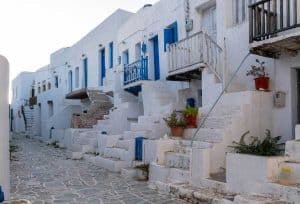
On the side of the Castle facing the Town are its two entrances, the Loggia and the Paraporti. Despite the conversions that followed the houses after the elimination of the risk of raids, the architectural physiognomy of the Castle remains unchanged to this day.
Two main parallel streets dominate, Kato Rua and Mesa Rua, with Kato Rua being one of the most characteristic and photographed spots of the island. The two streets end in the unique square of the Castle just before reaching its western end, the courtyard of the Pantanassa church.
Folklore Museum
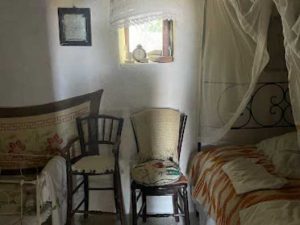
The stairs are renewed. On the right is the oldest building, unknown from which century. We estimate the 18th century. was already built. It is divided into three areas: the residence, the cellar and the oven. The walls are erected with dry stones, i.e. without binding material.
The floors in all three areas are dirt with clean special soil, well laid. The Byzantine houses also had a similar layer, as found in the excavations. This Museum, which illustrates the way of life of an agricultural unit of the past, is a kind of eco-museum, as modern museology calls it.
The museum has the potential to offer the new generation “the knowledge of their identity”, following the changes that time brings in the economic, cultural, social and ecological conditions of life. And it can still offer elements of study in folklore about the sources of Hellenism.
Lighthouse of Aspropounda
The Lighthouse of Aspropounda was built in 1919 at a height of 58 m above the sea and its lantern is 11 m high. Its light is visible at a distance of 17 nautical miles. At the beginning of its operation, the lighthouse was lit with a wick, then with an oil vapor mechanism, and since 1986 it has been operating with solar energy. You can reach the lighthouse on foot either from Livadaki or from Ano Meria.

Kastelos
Kastelos, a small rocky peninsula in the northern part of the island, archaeological excavations brought to light the ruins of a prehistoric small settlement, which date back to around the middle of the 3rd millennium BC. (in the Proto-Cycladic period).
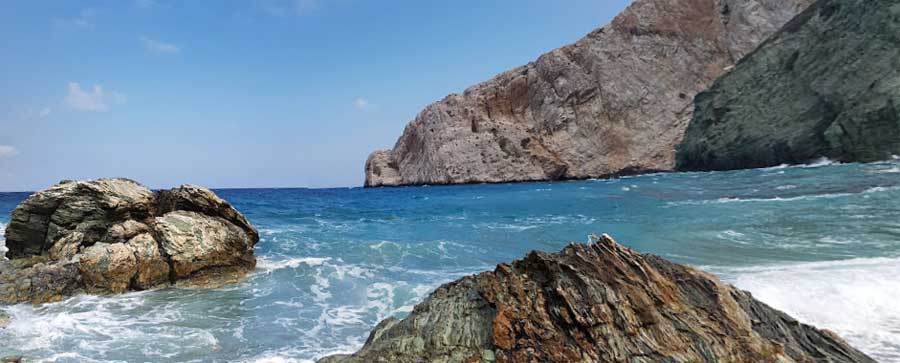
Cave of Georgitsis
The Georgitsi cave is located on the south-eastern side of the island, near Karavostasis, but is only accessible from the sea. You can visit it by boat on the way to Katergo beach. It is an ideal spot for diving.

Chrysospilia cave
To visit Chrysospilia, one of the most spectacular natural monuments of Greece in general, it is preferable to take a boat from Karavostasis. To be able to enter this unique unexplored cave you need special permission from the community and of course the weather must be mild without strong winds.
The cave is located on the northeast side of the island, almost 10 meters above sea level. Many remarkable findings were found inside it, such as human bones, broken vessels, a Roman water tank, but also evidence that proves that this place was a place of worship and most likely coming of age ceremonies in the 4th century BC.
On the walls of the roof and its sides can be seen many names together with the place of origin of teenagers who took part in these ceremonies. Something unique in the Greek area in general. Also, from other inscriptions, the archaeologists came to the conclusion that the goddess Artemis Selasphoros and Apollo the Protector were worshiped on the island at that time.
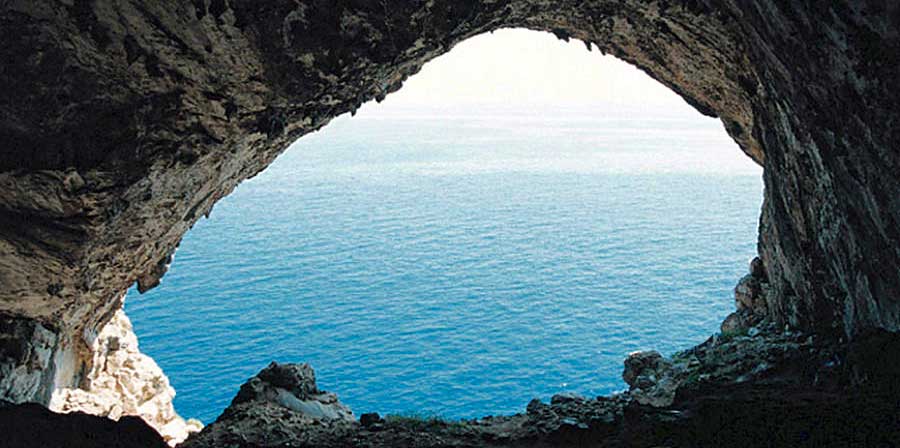
Hiking and walk paths
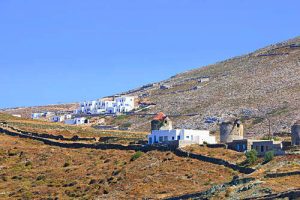
About 20 kilometers of trails run through Foledandros. The main routes are as follows: From Chora to Agali via Stavros, Christos and Fira, from Ano Meria to Agali via Agios Ioannis, Marmaros and Agios Nikolaos, from Ano Meria to Ambeli via Agios Panteleimon, and from Brigade leader of Ano Meria as far as Mylos via Faros of Aspropounda.
Until a few years ago the only way to reach Hora from the port of Karavostassis was via a charming cobblestone path. Now there’s an asphalt road that leads to the village of Ano Meria in the north of the island.
The road is only about eight kilometres long and there’s a good bus service connecting the three island settlements. The local bus meets all incoming ferries and transports new arrivals to Hora. And you can catch a bus back to the port from Hora an hour before your ferry departs, even late at night.
Public transport
Buses run regularly to and from Ano Meria, stopping at the track down to popular Angali Beach. If you really feel you can’t get by without a set of wheels, your only option will be to hire a moped – available at either Jimmy’s in the port or Moto Rent in Hora, near the Sottovento Tourism Office. But you might have to brave the obvious irritation of some of your fellow visitors because tourists who visit Folegandros are generally those who come here for the island’s peace and tranquility.
If you’re considering hiring a car during your visit to Folegandros, think again because you can’t! There are no car hire firms lining the waterfront and the streets of the main town here as there are in the more commercialised islands.
You can bring your own car or a rental car in by ferry but it’s really not worth it. There’s only one asphalt road and the rest of the island’s paths and tracks are best explored on foot. You’ll find island-hopping with a rental car an expensive past time so you’ll be better off just hiring a car for a day or two on those islands that merit it.
How to get there
By Air
Folegandros is a mall island, without its own airport but with good connections to the neighboring islands and one in particular, which is fortunately the most famous of all and the one with the best possible accessibility. Since it is always necessary to get to Folegandros by ship, it is better to do it from the nearest international airport, namely that of Santorini .
By ferry
Every summer there are many direct flights to Santorini, and once you land on the island, there are at least two daily ferries to Folegandros. There are three companies that carry out the route. The first is Sea Jets, the fastest one and which does not make intermediate stops, the cost of which is not indifferent, it exceeds €50 one way per person, but nowadays comforts always come at a high price, unfortunately.
The second is Zante Ferries , which operates the route with a conventional ferry also going to Athens and Piraeus. Finally, the third ship that can be used to reach Folegandros from Santorini is the local boat Maistros Santorini .
These last two ships are slower, taking two or three hours depending on the journey, since before arriving in Folegandros they can also stop in Ios and Sikinos. Journey time: 50 minutes – 3 hours
